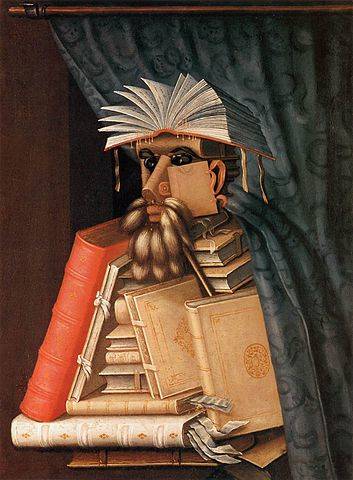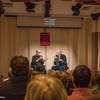Arcimboldo’s Curious Legacy on Display in Rome
For the next four months, Rome will host the work of Italian Mannerist painter Giuseppe Arcimboldi (1526-1593) in an exhibition at Palazzo Barberini. The retrospective is titled Arcimboldo, after the artist’s popular name.
The show, curated by leading Arcimboldo expert Sylvia Ferino-Pagden, is organized by the National Galleries of Ancient Art in Rome in collaboration with MondoMostre Skira.
As of this weekend, until mid-February, visitors have the opportunity to admire approximately 100 works of 16th century Lombard culture. Nearly 20 of these pieces are by the Milanese painter himself, while rest are products of his contemporaries.
Arcimboldo: the Unconventional Mannerist
Arcimboldo is known for his imaginative and bizarre portrait heads made entirely of objects such as fruits, vegetables, books, animals and flowers. Accordingly, the display will include art objects, tapestries, mosaics, botanical drawings and animal drawings as well, in order to reproduce for spectators the scientific, intellectually stimulating environment in which the artist’s individual talent was nourished.
Navigating through the exhibition’s spacious rooms, visitors will be transported to the workshop where a young Arcimboldo, training under his father and among followers of Leonardo da Vinci, was inspired by components of art, science, philosophy and humanism. The result: an artistic expression that challenged the conventions of the classical style prevalent in Rome during the 16th century.
In fact, director of the National Galleries of Ancient Art in Rome, Flaminia Gennari Santori, explains that the artwork represents "a very serious rhetorical game, a sort of engagement with the visitor's intellect."
The Exhibition
The show’s itinerary commences with a tribute to the Milanese environment where Arcimboldo grew up. Like his father, Arcimboldo began his career as a designer of stained glass and frescoes at local cathedrals. He was introduced by a family friend to the legendary da Vinci, whose fascination with the physical human body, particularly grotesque portraits, seemed to touch Arcimboldo and his work.
The exhibition continues with the period the artist spent as a portrait painter in the Habsburg courts of Vienna and Prague. Under the service of Ferdinand I, Maximilian II and Rudolf II, Arcimboldo was appointed to the lucrative title of Count Palatine. This selection includes a portrait of the “Archduchess Anna,” as well as Arcimboldo’s famous personification of the four “Seasons” in dialogue with the four “Elements” (which has not been exhibited for at least 20 years).
After a detour through a section on naturalistic study, the next chapter is Arcimboldo’s so-called “reversible heads.” The paintings are referred to as such because they are still life images that become human faces when rotated 180 degrees.
"They are playful and strange images where however nothing is left to chance," says Santori.
Coupled with the following sections on composite busts and portraits, these two collections in succession demonstrate Arcimboldo's ability to not only show nature and human beings at the same time, but also to illustrate how closely related they are. From a distance, the composite heads seem to be normal human portraits. Yet a closer view reveals individual objects, carefully selected to characterize the subject, forming various anatomical shapes of a human bust.
These last works are often referred to as Arcimboldo’s “ridiculous paintings,” of which the Palazzo’s exhibition holds masterpieces such as “The Librarian” and “The Jurist.”
The Arcimboldo exhibition is open Saturdays and Sundays from 9am until 7pm. Tickets are sold for 15 € (13 € reduced). Children and teens under 18 may enter for free.
For more information see: http://www.arcimboldoroma.it/









































i-Italy
Facebook
Google+
This work may not be reproduced, in whole or in part, without prior written permission.
Questo lavoro non può essere riprodotto, in tutto o in parte, senza permesso scritto.